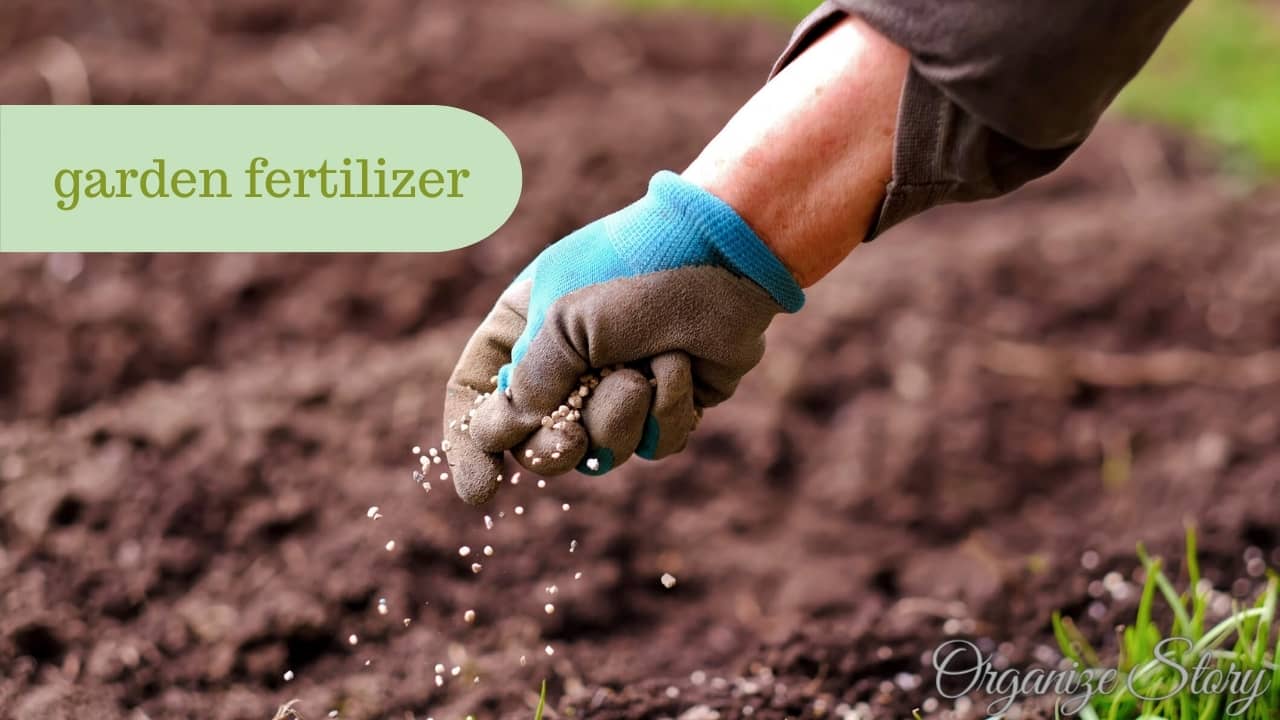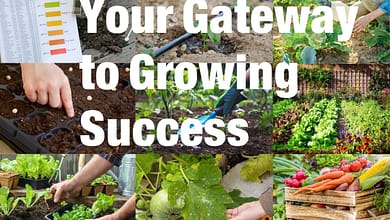The Right Way to garden fertilizer and Vegetable and Plants

Garden fertilizer plays a pivotal role in nurturing the vibrant ecosystem of your vegetable garden.
Essential for the growth and vitality of plants, it complements the trio of nutrients, sunlight, and water.
For most gardeners, enriching garden soil with garden fertilizer is necessary to ensure optimal plant health and productivity.
Garden fertilizer choice can encompass organic and inorganic varieties, offering versatility in cultivation methods.
However, the true magic lies in its application at the right time and dosage, guaranteeing satisfactory outcomes for your gardening endeavors.
Before delving into the realm of garden fertilizers, it’s imperative to embark on a journey of soil analysis.
This entails procuring a professional soil test readily available through commercial gardening sites or local university-affiliated extension service offices.
Such meticulous assessment unveils the intricate nutritional needs of your garden soil, guiding you in precisely supplementing essential nutrients.
The article is in the series [Gardening for Beginners: Cultivating Green Thumbs from Scratch]
How does the strategic integration of fertilizer into your gardening routine contribute to nurturing soil fertility?

Fertilizer is vital in nurturing soil fertility and fostering robust plant growth within your garden ecosystem.
This substance, typically comprised of nitrogen, phosphorus, potassium, and other essential elements, enriches the soil and furnishes plants with the nutrients indispensable for their Development.
Whether in granular, liquid, or slow-release form, fertilizers play a pivotal role in sustaining the vibrancy of flowers, the healthiness of fruits and vegetables, and the verdant allure of garden foliage.
The application of fertilizer yields manifold benefits beyond mere nutrient provision.
It enhances soil mineral content, fosters robust root systems, and fortifies plants with the necessary nutrients for optimal health and productivity.
Moreover, by judiciously employing fertilizers, the necessity for additional soil amendments or enhancements diminishes, streamlining the gardening process.
Regular and prudent use of fertilizers ensures that plants receive a steady supply of essential nutrients, fostering their resilience and yielding high-quality yields.
Furthermore, fertilizer is a nourishing source for garden microbes, facilitating the breakdown of organic matter and rendering nutrients readily accessible to plant roots, thereby fostering a symbiotic relationship between soil, plants, and microorganisms.
Incorporating fertilizer into your gardening regimen is not merely a practice in horticulture but a testament to nurturing the intricate
balance within the garden ecosystem, fostering vitality and abundance
Deciphering Organic Fertilizer Versus Chemical Fertilizer: Making Informed Choices for Your
In the realm of fertilizers, there exists a spectrum of options to consider for nurturing your garden’s verdant splendor.
One avenue involves procuring chemical fertilizers readily available at your local garden center.
Commonly referred to as commercial or non-organic fertilizers, these formulations are engineered to swiftly deliver essential nutrients to your plants. Renowned for their ease of application and rapid nutrient absorption, chemical fertilizers offer a convenient solution for providing immediate nutrition to plants in need.
However, despite their expediency, drawbacks loom; the nutrient profile of chemical fertilizers may be somewhat limited, potentially leaving certain plants, particularly shrubs and perennials in containers, deficient in micronutrients.
Furthermore, the fleeting benefits of liquid chemical fertilizers coupled with the risk of overfertilization and their inability to foster long-term soil improvement pose considerations for discerning gardeners.
Nevertheless, despite these drawbacks, chemical fertilizers persist as a viable option for supplementing plant nutrition efficiently.
Many gardeners are now opting for organic gardening.
Natural fertilizers are sourced from organic materials such as animal, plant, or mineral origins.
They are slower-acting fertilizers for plants to absorb. Unlike chemical fertilizers, soil microbes need time to break down the organic material to garner nitrogen, phosphorus, potassium, and other minerals.
Gardeners will require a bit more patience to see results from organic fertilizers.
Types of organic fertilizers include bone meal, blood meal, manure, compost tea, and compost.
Organic fertilizers can be more expensive than chemical options, but they stick around longer and improve the soil quality.
How much fertilizer should I use in the garden?
Determining the optimal amount of fertilizer for your garden is a nuanced endeavour, contingent upon various factors, including fertilizer type and plant requirements.
The application process commences with an understanding that freshly planted perennial roots and bulbs typically do not necessitate immediate fertilization; instead, the focus shifts to established perennials and shrubs.
For annuals nestled in hanging baskets and flower beds, fertilization may commence a couple of weeks post-planting.
Embracing a cautious approach, initiating fertilization with a diluted concentration is advisable, progressively augmenting it over time.
This gradual escalation mitigates the risk of inducing fertilizer shock or root scorching, which is particularly detrimental to tender new roots.
Prudence dictates adherence to the manufacturer’s guidelines, supplemented by due diligence in compliance with local regulations, ensuring fertilizers’ safe and responsible application.
Moreover, soil testing emerges as an indispensable precursor to fertilizer application, affording insights into nutrient deficiencies and pH levels critical for plant growth.
By comprehensively assessing soil composition, gardeners can tailor their fertilization regimen to meet the specific nutritional requirements of their chosen plants, thereby optimizing growth and vitality while minimizing potential adverse effects.
In navigating the labyrinth of fertilizer application, a reasonable balance between prudence and precision is paramount, safeguarding both plant health and environmental sustainability.
When should fertilizers be applied for Optimal Plant Health?
Ensuring the judicious application of fertilizer entails employing correct doses and adhering to precise timing for maximal efficacy.
If you notice signs of fatigue among your garden plants, such as discoloured or pale foliage, the fertilizer could be the solution to invigorating their vitality.
By infusing essential nutrients into the soil, fertilizer catalyzes robust plant growth and overall health.
When contemplating fertilizer application, consulting with your local garden centre proves invaluable for tailored recommendations aligned with your soil type and plant varieties.
However, exercise caution with newly established plants, as their roots are not yet equipped to handle fertilizer inputs.
For spring bulb planting in the fall, the optimal timing for fertilization arises in spring, after the winter frost’s final thaw. This strategic approach furnishes plants with the necessary nutrients at the onset of the growing season, bolstering their vigour.
When tending to vegetables, fruits, hanging baskets, and bedding plants, a combination of slow-release and liquid fertilizers administered every three weeks throughout the growing season yields optimal results, enhancing productivity and ensuring a bountiful harvest.
A critical aspect of fertilizer application is selecting the appropriate time of day.
During the scorching summer months, aim for fertilization during the cooler periods to minimize plant stress.
For granular formulations, synchronizing fertilizer application with watering facilitates its breakdown and absorption into plant roots.
Applying fertilizer to moist soil is imperative, ensuring it reaches the plant’s roots effectively.
Additionally, gently rinsing foliage and blooms aids fertilizer absorption while safeguarding against potential burn.
Whether opting for chemical or organic fertilizer, precision is key.
Direct application to the root dripline, rather than the base of the stem, mitigates the risk of root rot and ensures plants’ optimal nutrient uptake.
When to Cease Fertilizer?
Recognizing the opportune moment to halt fertilizer applications is crucial for facilitating a smooth transition into dormancy for garden plants.
As plants prepare to enter dormancy, continued fertilization may inadvertently signal growth cues, disrupting their natural rhythms.
A strategic cessation of fertilizer input ensures plants enter dormancy gracefully, conserving energy for the dormant period ahead.
A prime window for concluding fertilizer applications, particularly for roses, summer bulbs, and perennials, emerges around mid-August. By this time, plants are winding down their active growth phase, making it an opportune juncture to suspend fertilization.
This strategic pause allows plants to gradually taper off growth activity, preparing them for the impending dormancy.
Embracing this nuanced approach to fertilization scheduling not only respects the natural lifecycle of plants but also promotes their long-term health and resilience.
By aligning fertilizer applications with the onset of dormancy, gardeners foster a harmonious relationship with the seasonal rhythms of plant life, ensuring their charges are adequately prepared for the dormant phase ahead.
Deciphering Fertilizer Numbers
Understanding fertilizer numbers is fundamental to selecting the optimal fertilizer for gardening.
As you peruse chemical fertilizers at the garden store, you’ll encounter labels adorned with numbers like 10-10-10, each representing the ratio of essential nutrients: Nitrogen, Phosphorus, and Potassium, collectively known as the NPK ratio. For instance, a 10-10-10 fertilizer signifies a balanced blend of these nutrients, with each comprising 10% of the total formulation, supplemented by other minerals and binding agents.
Delving deeper into the role of each nutrient, nitrogen stands out as the catalyst for lush foliage growth, providing plants with the nutrition needed to thrive above the ground.
Phosphorus fosters robust root development, laying the groundwork for blooms and fruit production.
Fertilizers tailored for flower production or establishing new lawns typically boast higher phosphorus content.
Meanwhile, potassium contributes to overall plant health and resilience by fortifying cell structure and enhancing plant vigour.
Discerning the NPK ratio becomes less straightforward in organic fertilizers due to the absence of labelling.
However, various organic materials boast distinct nutrient profiles. For instance, blood meal, fish emulsion, and seaweed extract are rich nitrogen sources, while bone meal and rock phosphate offer concentrated phosphorus.
Potassium-rich options include greensand and sulfate of potash.
Notable organic manures such as mushroom (1-1-1), cow (0.25-0.15-0.25), and chicken (1.1-0.8-0.5) provide additional nutrient diversity, although it’s crucial to utilize well-rotted manure to avoid potential harm to plants.
Which Fertilizer is Right for Me?
When selecting the right fertilizer for your gardening endeavours, a nuanced understanding of your plant’s needs is paramount.
To foster robust foliage growth, opt for a fertilizer with a higher nitrogen content, as nitrogen is the primary driver for lush greenery.
Conversely, if your priority lies in enhancing bloom production, prioritize fertilizers with a higher phosphorus content, as phosphorus facilitates the development of blooms and fruits.
There is no definitive winner in the perennial debate between organic and chemical fertilizers.
Plants are indifferent to the source of nutrients, be it chemical or organic; thus, the choice ultimately boils down to personal preference.
However, if you lean towards chemical fertilizers, you’ll find specialized formulations tailored for specific plant types.
For instance, there are fertilizers optimized for roses, vegetables, and flower gardens, each formulated to meet the unique nutritional needs of the respective plants.
When in doubt, seek guidance from the knowledgeable staff at your local garden centre.
With insights into your gardening goals and plant preferences, they can offer tailored recommendations to ensure you select the ideal fertilizer for nurturing flourishing greenery in your garden sanctuary.
conclusion
Selecting the right fertilizer for your garden involves understanding your plants’ needs and personal preferences.
Whether you opt for a nitrogen-rich fertilizer to promote lush foliage or a phosphorus-heavy one to enhance bloom production, the choice ultimately depends on your gardening goals.
Whether chemical or organic, there’s no one-size-fits-all solution, but with careful consideration and guidance from knowledgeable sources, you can nourish your garden to thrive and flourish.
















